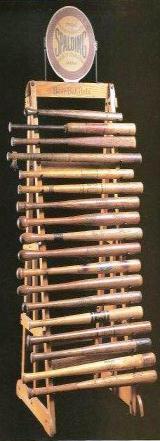Why do pitchers take up a different stance once someone is on base?
by Jim
(Phoenix, AZ)

Wind Up Position, Establishing Time Of Pitch

Set Position, Runner On First Base
Jim asked: I've noticed that when a runner reaches base, the pitcher changes his stance prior to the next pitch.
Is this done for convenience of the pitcher to stay aware of the runner or is this a rule?
If it's a rule, what's the logic behind it?
Rick answered: Jim, thank you for your question.
Rule 8.01 Legal Pitching Delivery. There are 2 legal pitching deliveries, the Wind Up Position and the Set Position, and either position may be used at any time.
a) Windup Position: The pitcher shall stand facing the batter, his pivot foot in contact with the pitcher's plate and the other foot free.
From this position any natural movement associated with his delivery of the ball to the batter commits him to the pitch without interruption or alteration. He shall not raise either foot from the ground, except in his actual delivery of the ball to the batter, he may take one step backward and one step forward with his free foot.
From the wind up position, the pitcher may:
1. Deliver the ball to the batter
2. Step and throw to a base, in an attempt to pickoff a runner
3. Disengage the rubber ( if he does he must drop his hands to his sides.)
In disengaging the rubber the pitcher must step off with his pivot foot and not his free foot first. He may not go into a set or stretch position - if he does it is a balk.
b) The Set Position: Set position shall be indicated by the pitcher when he stands facing the batter with his pivot foot in contact with, and his other foot in front of, the pitcher's plate, holding the ball in both hands in front of his body and coming to a complete stop.
From the set position he may:
1. Deliver the ball to the batter
2. Throw to a base, or
3. step backward off the pitcher's plate with his pivot foot.
There is no rule that requires a pitcher to use one or the other at any specific time.
The reason pitchers change to the set position with a runner(s) on base, is to keep them from stealing a base, or making it more difficult to do so.
When the pitcher starts into his windup, top image above, he is unable to do anything more than deliver the ball to the plate.
Base runners are able to start their steal as soon as the pitcher moves his non-pivot foot at all, thus committing him to the pitch. If he stops at this point, it
is a balk, and the runner(s) advance one base.
From the Stretch Position, image 2, the pitcher has to come to a stop before delivering the ball to the plate. That stop also allows the pitcher to make the runner stop as he takes his lead.
If the runner does not stop, the pitcher can step back off the pitcher's plate, which immediately makes him an infielder, not a pitcher. He can then throw to any base or turn and run at the runner, without the penalty of a balk.
In theory, the windup provides some additional power to a pitcher, while the set position allows them to hold runners close, making it more difficult to steal bases.
There are many pitchers that use the set position for all situations, rather than have two separate deliveries.
There are no pitchers who use the windup position exclusively, due to the advantages it gives to the opposition when they get runners on base.
Yours in baseball,
Rick
Click here to post comments
Join in and write your own page! It's easy to do. How? Simply click here to return to Ask The Baseball Coach.
|






